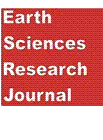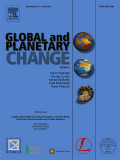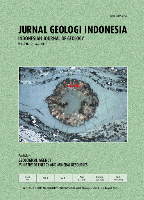
Earth Sciences Research Journal
Scope & Guideline
Pioneering Research for a Changing World
Introduction
Aims and Scopes
- Geological and Geotechnical Studies:
Research focusing on the geological formations, structure, and properties of Earth materials, including rock mechanics, sedimentology, and geochemistry. - Hydrology and Water Resources Management:
Studies that explore water resource availability, groundwater vulnerability, and hydrological modeling to address water-related challenges and support sustainable management. - Remote Sensing and GIS Applications:
Utilization of remote sensing technologies and Geographic Information Systems (GIS) for environmental monitoring, resource management, and spatial analysis. - Natural Resource Exploration and Environmental Impact:
Research on mineral resources, including assessment, exploration, and the environmental implications of resource extraction and utilization. - Climate Change and Environmental Sustainability:
Investigations into the effects of climate change on geological and hydrological processes, and strategies for ecological restoration and sustainable land use.
Trending and Emerging
- Integration of Big Data and Machine Learning:
Increasing use of big data analytics and machine learning methods to analyze geological and hydrological data, enhancing predictive capabilities and decision-making processes. - Remote Sensing Innovations:
Growing emphasis on advanced remote sensing techniques for environmental monitoring, land use change detection, and resource management, indicating a trend towards technological integration. - Environmental Restoration and Sustainability Practices:
A notable rise in research focused on ecological restoration strategies and sustainability practices in land management, reflecting global environmental concerns. - Hydrological Modeling and Assessment Techniques:
Emerging methodologies for hydrological assessment, including GIS-based vulnerability analyses and sensitivity studies, are gaining traction as critical tools for water resource management. - Interdisciplinary Approaches to Geological Research:
Increased collaboration across disciplines, integrating geology, biology, and environmental science to address complex Earth system challenges.
Declining or Waning
- Historical Climate Events:
Research focusing on historical climate patterns and their relationship to geological changes has decreased, possibly due to a shift towards more contemporary studies on climate change impacts. - Traditional Soil Studies:
Studies focused solely on basic soil properties and classifications without integrating advanced techniques such as remote sensing or geostatistics are becoming less frequent. - Conventional Mining Techniques:
Papers centered on traditional mining techniques and practices are declining, reflecting a shift towards innovative technologies and sustainable practices in mining.
Similar Journals

Earth Interactions
Bridging Disciplines to Decode Earth’s ComplexitiesEarth Interactions is a prominent journal that serves as a critical platform for interdisciplinary research in the field of Earth and Planetary Sciences. Published by the American Meteorological Society, this journal has established itself as a key resource for scholars, researchers, and professionals dedicated to understanding Earth's complex systems and their interactions. With an impressive Q1 ranking in the category of Earth and Planetary Sciences for 2023, it reflects a commitment to high-quality scholarship and impactful contributions to the field. The journal, with its dedicated coverage from 2004 to 2024, encompasses a wide array of topics, providing comprehensive insights into geological, atmospheric, and environmental phenomena. Although it operates under a non-open access model, its significance is underscored by its placement in the top percentile of Scopus rankings (Rank #89/195), making it an exciting resource for those pursuing advanced studies and applications related to Earth's systems.

Journal of Himalayan Earth Sciences
Exploring the Earth's Mysteries of the HimalayasThe Journal of Himalayan Earth Sciences (ISSN: 1994-3237; E-ISSN: 2305-6959) is a distinguished publication by UNIV PESHAWAR, dedicated to advancing knowledge in the field of earth sciences, particularly as they relate to the Himalayan region. Established in 2013, this journal aims to provide a platform for researchers, professionals, and students to share original research findings, reviews, and innovative methodologies that contribute to the understanding of geological and environmental phenomena in this ecologically significant area. Despite being categorized in Q4 of the Earth and Planetary Sciences, the journal showcases valuable contributions to the scientific community and encourages submissions that delve into both the challenges and advancements within Earth sciences, with a particular focus on the unique geological structures and processes of the Himalayas. As an open-access journal, it ensures that research is accessible to a global readership, promoting collaboration and discussion among scholars and practitioners. The journal's operational base in Peshawar, Pakistan, places it at the heart of Himalayan research, making it an invaluable resource for those invested in earth sciences.

Science China-Earth Sciences
Leading the Way in Earth Sciences Research and Discourse.Science China-Earth Sciences, published by SCIENCE PRESS, stands as a leading journal in the field of Earth and Planetary Sciences, currently holding a prestigious Q1 ranking in the 2023 category and positioned at Rank #12 out of 195 in Scopus, reflecting its significance with an impressive 94th percentile. Specializing in a wide array of topics including geological processes, environmental science, and planetary studies, the journal serves as a vital resource for researchers, professionals, and students alike, fostering interdisciplinary collaboration and advanced scientific discourse. With a commitment to accessibility and knowledge dissemination, Science China-Earth Sciences offers an Open Access model, ensuring that high-quality research is available to a global audience. Situated in Beijing, China, this journal is dedicated to promoting innovative scientific advancements and understanding the complexities of our planet from 2010 to 2024 and beyond. As such, it remains essential for anyone engaged in the dynamic and evolving field of Earth sciences.

GLOBAL AND PLANETARY CHANGE
Advancing Knowledge for a Sustainable FutureGLOBAL AND PLANETARY CHANGE, published by Elsevier, is a premier international journal focused on the critical issues surrounding environmental science, climate change, and planetary dynamics. Since its inception in 1989, this journal has established itself as a leading voice in the field, currently holding a prestigious Q1 ranking in both Global and Planetary Change and Oceanography as of 2023. With a remarkable influence reflected in its Scopus rankings—15th in Earth and Planetary Sciences and 34th in Global and Planetary Change—it serves as an essential platform for researchers, professionals, and students. The journal provides a comprehensive examination of cutting-edge research findings and innovative developments that address the urgent challenges facing our planet. Although it is not an Open Access journal, it remains a vital resource for anyone keen to contribute to or stay informed on the ever-evolving discourse of global environmental change, promoting sustainable solutions for the future.

EARTH
Pioneering discoveries in Earth and Environmental Sciences.EARTH is a prestigious journal published by MDPI, located in Switzerland, with a commitment to advancing the fields of Earth and Planetary Sciences and Environmental Science. Launched in 2020, the journal emphasizes an open-access publication model, ensuring that high-quality research is widely accessible to the scientific community and beyond. As of 2023, it proudly holds a Q2 ranking in both the Environmental Science and Earth and Planetary Sciences categories, indicating its significant impact within these disciplines; it ranks #90 out of 219 and #70 out of 159 in their respective fields according to Scopus. With the convergence of multidisciplinary research and the critical challenges our planet faces, EARTH seeks to publish innovative studies that foster a deeper understanding of geological and environmental processes. Researchers, professionals, and students alike will find this journal an invaluable resource for the latest findings and discussions shaping our understanding of Earth sciences.

Journal of Asian Earth Sciences-X
Exploring the Depths of Asian GeosciencesJournal of Asian Earth Sciences-X, a distinguished publication by ELSEVIER, is at the forefront of Earth and planetary sciences, particularly focusing on the dynamic fields of geology and earth-surface processes. As an Open Access journal since 2019, it provides unparalleled access to high-quality research, fostering global collaboration and dissemination of knowledge. With an impressive impact factor and ranking in the Q2 category for both Earth-Surface Processes and Geology, it serves as a crucial platform for researchers, professionals, and students alike to share their findings and insights. Situated in the United Kingdom, the journal thrives on contributions that enhance our understanding of Asian geosciences within a broader global context, aiming to tackle major challenges such as climate change and natural resource management. By bridging regional studies with global perspectives, the Journal of Asian Earth Sciences-X is not only a vital resource for academia but also supports sustainable development initiatives across the region.

Journal of Earth System Science
Fostering Collaboration in Earth and Planetary SciencesThe Journal of Earth System Science, published by Indian Academy of Sciences, is a pivotal resource in the field of Earth and Planetary Sciences, boasting an impressive Q2 ranking in 2023. Since its inception in 2005, this journal has been dedicated to advancing our understanding of complex Earth systems, publishing high-quality research that spans across various disciplines within the geosciences. With an E-ISSN of 0973-774X and a commitment to Open Access, it makes cutting-edge scientific insights widely available to researchers and professionals alike. The journal serves as a vital platform for innovative research and critical discussions, making significant contributions to the global scientific community, particularly as we navigate the challenges posed by climate change and environmental sustainability. Located in Bangalore, India, it continues to foster international collaboration and discourse among scholars, reinforcing its role as an essential publication within the Earth and Planetary Sciences domain.

Indonesian Journal of Geoscience
Pioneering Research in Geoscience for Global Impact.Indonesian Journal of Geoscience, published by the GEOLOGICAL AGENCY, is a vital platform for sharing cutting-edge research in the field of Earth and Planetary Sciences. With an ISSN of 2355-9314 and E-ISSN of 2355-9306, this open-access journal has been making significant contributions to the geoscientific community since its establishment in 2013. Operating out of Bandung, Indonesia, the journal is dedicated to disseminating high-quality research across diverse areas, making it an essential resource for researchers, professionals, and students alike. Recognized in the 2023 Q2 category in Earth and Planetary Sciences, it currently ranks #134/195 among general Earth and Planetary Sciences journals in Scopus, reflecting its growing prominence and academic rigor. The journal seeks to foster scientific discussions by publishing original research, reviews, and case studies that address contemporary challenges and advancements in geoscience, thus contributing to a deeper understanding of our planet. With its commitment to open access, the Indonesian Journal of Geoscience ensures that vital research is accessible to a global audience, encouraging collaboration and innovation in the field.

Carpathian Journal of Earth and Environmental Sciences
Fostering Collaboration in Earth and Environmental ResearchCarpathian Journal of Earth and Environmental Sciences is a distinguished academic journal dedicated to advancing the interdisciplinary field of Earth and environmental sciences. Published by the Carpathian Association for Environment and Earth Sciences, this journal plays a pivotal role in disseminating high-quality research focused on the dynamic interactions between geological processes and environmental changes. With an ISSN of 1842-4090 and an E-ISSN of 1844-489X, the journal is indexed in Scopus and holds an esteemed Q3 quartile ranking in both Earth and Planetary Sciences and Environmental Science categories as of 2023. Since its inception in 2008, the Carpathian Journal has provided an open access platform for researchers, professionals, and students to share insights, foster collaboration, and engage in critical discussions on pressing environmental issues. By continuously contributing to the body of knowledge in this field, the journal not only enhances academic discourse but also promotes sustainable environmental practices across Romania and beyond.

Earth Science Informatics
Pioneering Interdisciplinary Collaboration in Earth Science.Earth Science Informatics, published by SPRINGER HEIDELBERG, serves as a premier platform for disseminating innovative research in the realm of Earth and Planetary Sciences. With an ISSN of 1865-0473 and an E-ISSN of 1865-0481, this journal offers insightful contributions that leverage informatics and data-driven approaches to address complex geoscientific challenges. As a testament to its impact in the field, it ranks in the Q2 quartile and holds an impressive 73rd percentile rank among 195 journals in the broader **Earth and Planetary Sciences** category, as per Scopus rankings. This journal invites researchers, professionals, and students to explore and contribute to the growing body of knowledge that bridges the gap between informatics and Earth science, fostering advancements in both theoretical frameworks and practical applications. Situated in Germany, at TIERGARTENSTRASSE 17, D-69121 HEIDELBERG, it aims to enhance interdisciplinary collaboration and propel scientific discovery from 2009 to 2024 and beyond, reinforcing its vital role in the academic community.